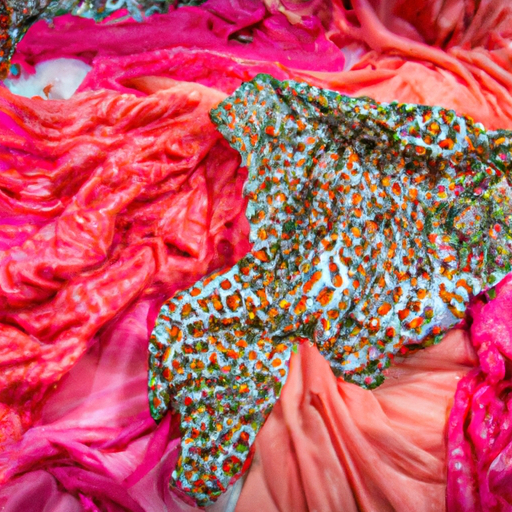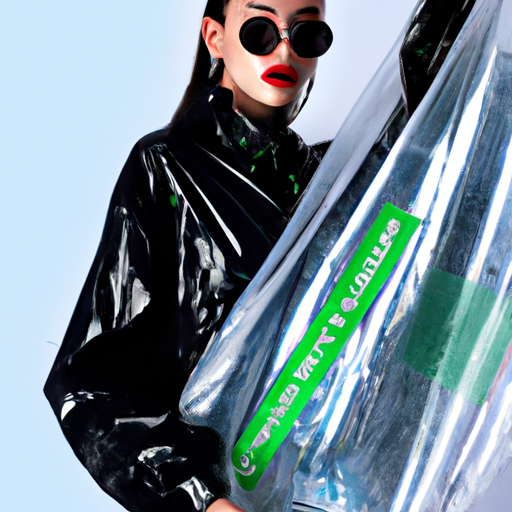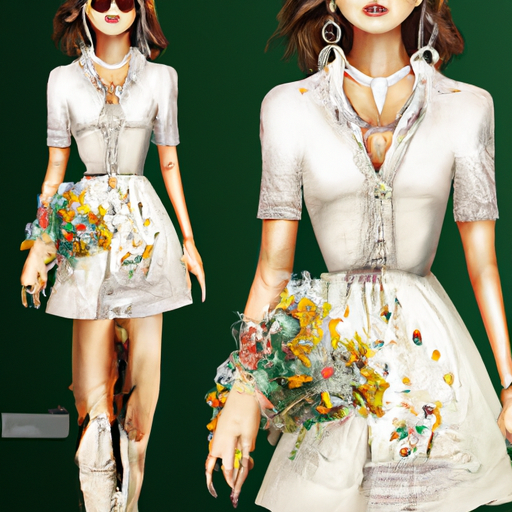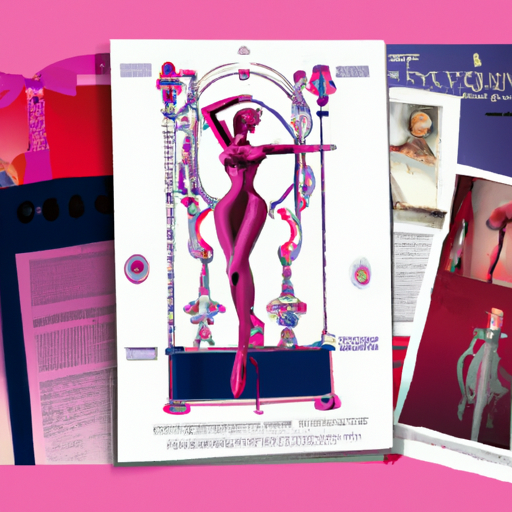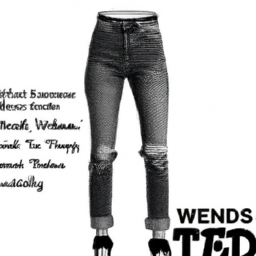What Brings Brands And Buyers Together And Gives Fashion Retailers The Lowdown On New Trends?
Imagine a world where brands and buyers seamlessly come together, creating a thriving marketplace. Now, envision fashion retailers armed with all the latest trend insights, ready to make informed decisions that keep their customers satisfied. The secret behind this harmonious collaboration lies in a powerful tool: a platform that effortlessly connects brands with buyers and provides invaluable information on emerging trends. With this platform at their disposal, fashion retailers gain a competitive edge, ensuring they can always stay ahead of the curve. Welcome to the future of the fashion industry, where connectivity and trend intelligence reign supreme.

Table of Contents
1. Fashion Retailers: The Power Players of the Industry
When it comes to the world of fashion, retailers play a crucial role in connecting brands with buyers. They have the power to influence and shape the industry, making them essential players in the fashion ecosystem. Fashion retailers act as a bridge between brands and consumers, bringing together the latest trends and providing a platform for buyers to discover new styles.
1.1 The Influence and Importance of Fashion Retailers
Fashion retailers hold significant influence over consumer purchasing decisions. They curate collections, create visually appealing displays, and provide personalized shopping experiences that attract customers. By carefully selecting the brands and products they offer, retailers have the ability to shape fashion trends and influence consumer preferences. In many cases, buyers trust the judgment of their favorite retailers and look to them for guidance on what to wear.
1.2 Evolving Role of Fashion Retailers
With the ever-changing landscape of the fashion industry, the role of retailers has evolved over time. They have transitioned from solely selling products to becoming trendsetters and style curators. In addition to offering a wide range of products, retailers now play a crucial role in creating a seamless shopping experience by providing exceptional customer service, personalized recommendations, and convenient online platforms. They have adapted to the demands of the digital age and are constantly innovating to meet the evolving needs of consumers.
1.3 The Need for Staying Updated with New Trends
Fashion is a fast-paced industry, with trends constantly emerging and evolving. Fashion retailers need to stay updated with the latest trends to remain relevant in the market. By keeping a pulse on emerging styles, retailers can offer buyers the most current and sought-after fashion pieces. This requires vigilant monitoring of fashion shows, trade fairs, and industry publications to stay ahead of the curve. By providing customers with access to the latest trends, fashion retailers become the go-to destination for fashion enthusiasts.
2. The Connection Between Brands and Buyers
The relationship between brands and buyers is at the core of the fashion industry. Fashion retailers play a vital role in fostering this connection, acting as intermediaries that bring brands and buyers together.
2.1 Understanding the Relationship Dynamics
The connection between brands and buyers goes beyond a simple transactional exchange. It is built on trust, shared values, and a sense of belonging. Buyers are drawn to brands that align with their personal style, values, and aspirations. Fashion retailers understand this dynamic and carefully curate their brand offerings to cater to the tastes and preferences of their target audience. By understanding the relationship dynamics between brands and buyers, retailers can create an environment that promotes brand loyalty and repeat business.
2.2 Building Trust and Loyalty
Trust is an essential component of the brand-buyer relationship. Fashion retailers play a crucial role in building and maintaining this trust. By offering high-quality products, excellent customer service, and a seamless shopping experience, retailers establish themselves as reliable sources of fashion. When buyers trust a retailer, they are more likely to return for future purchases and recommend the retailer to their friends and family. Building trust and loyalty is an ongoing process that requires retailers to consistently deliver on their promises.
2.3 Collaborations and Partnerships
Collaborations and partnerships between brands and retailers can strengthen the connection between brands and buyers. By joining forces, brands and retailers can leverage each other’s strengths and reach a broader audience. Collaborations allow brands to tap into the retailer’s customer base, while retailers benefit from the brand’s unique products and reputation. These partnerships often result in exclusive collections or limited-edition collaborations, creating a sense of exclusivity and excitement among buyers.
3. Platforms and Channels for Brand-Buyer Interaction
In today’s digital era, the channels and platforms for brand-buyer interaction have expanded beyond traditional methods. Fashion retailers now have a multitude of options to engage with their audience and create meaningful connections.
3.1 Traditional Methods: Fashion Shows and Trade Fairs
Fashion shows and trade fairs have long been staple platforms for brand-buyer interaction. These events provide an opportunity for brands to showcase their latest collections to buyers, fashion influencers, and media. It allows buyers to experience the garments firsthand, observe the craftsmanship, and interact with brand representatives. Fashion retailers play a crucial role in attending these events to keep a pulse on new trends, discover emerging designers, and establish relationships with brands.
3.2 Digital Platforms: Websites and Social Media
Digital platforms have revolutionized the fashion industry, offering new avenues for brand-buyer interaction. Fashion retailers now have their own websites and social media accounts, allowing them to showcase products, provide styling inspiration, and engage with buyers in real-time. Social media platforms like Instagram, Facebook, and TikTok have become virtual marketplaces where brands and retailers can connect with buyers directly. These platforms enable retailers to build a community, share behind-the-scenes content, and receive feedback from their audience.
3.3 Advantages and Challenges of Online Interactions
While online interactions provide convenience and accessibility, they also present unique challenges. One of the main advantages of online platforms is the ability to reach a global audience. Fashion retailers can expand their customer base beyond geographical boundaries and cater to buyers from around the world. However, online interactions lack the tactile experience of trying on garments and seeing the colors and textures in person. This makes accurate product descriptions, detailed imagery, and easy return policies crucial for online retailers to build trust and ensure customer satisfaction.
4. Fashion Forecasting: The Lowdown on New Trends
Fashion forecasting is a critical aspect of the fashion industry. It involves predicting upcoming trends and identifying the styles that will resonate with buyers. Fashion retailers rely on these forecasts to stay ahead of the curve and meet the demands of their customers.
4.1 The Role of Fashion Forecasting
Fashion forecasting acts as a compass for fashion retailers, guiding them in the right direction. It helps retailers determine which trends to invest in and which styles to feature in their collections. By analyzing consumer behavior, industry trends, and cultural influences, fashion forecasting provides valuable insights into the styles that will be popular in the future. Retailers utilize this information to make informed decisions about their product assortment, marketing strategies, and store displays.
4.2 Techniques and Methods for Predicting Trends
Fashion forecasting incorporates various techniques and methods to predict trends accurately. It involves analyzing historical data, studying fashion archives, observing street style, and monitoring celebrity fashion choices. Retailers also collaborate with trend forecasting agencies, attend industry seminars, and participate in trend-spotting events to gain insights into emerging styles. By adopting a multidimensional approach to trend prediction, fashion retailers can make educated predictions and align their offerings with future consumer preferences.
4.3 Staying Ahead with Predictive Analytics
Predictive analytics has revolutionized fashion forecasting, allowing retailers to harness the power of data to anticipate trends. By analyzing vast amounts of consumer data, retailers can identify patterns, preferences, and purchasing behaviors. This information enables them to make data-driven decisions and accurately predict future trends. Predictive analytics also helps retailers optimize inventory management, identify emerging market segments, and personalize recommendations for individual buyers. By leveraging the power of predictive analytics, fashion retailers can stay ahead of the competition and cater to the ever-changing needs of their customers.
5. Data Analysis and Consumer Insights
Data analysis plays a vital role in understanding buyer behavior and shaping the strategies of fashion retailers. By analyzing data, retailers can gain valuable consumer insights that inform their decision-making process.
5.1 Using Data to Understand Buyer Behavior
Fashion retailers collect and analyze data to gain a deeper understanding of buyer behavior. This includes data on purchasing patterns, browsing history, demographics, and social media engagement. By analyzing this data, retailers can identify trends, preferences, and areas of opportunity. They can determine which products are performing well, which ones need improvement, and which are in high demand. This understanding allows retailers to tailor their product assortment, marketing campaigns, and customer experience to better meet the needs of their target audience.
5.2 Market Research and Surveys
Market research and surveys provide valuable insights into the preferences and opinions of buyers. Fashion retailers often conduct surveys to gather feedback on customer satisfaction, product preferences, and shopping experiences. This data helps retailers understand buyer motivations, identify pain points, and make informed business decisions. Additionally, market research allows retailers to identify emerging market trends, track competitor strategies, and uncover untapped market segments. By leveraging market research and surveys, fashion retailers can adapt their offerings to fit the ever-evolving needs of their customers.
5.3 Personalization and Customization
Data analysis enables fashion retailers to offer personalized experiences and customization options to their buyers. By analyzing buyer data, retailers can understand individual preferences, style preferences, and sizing requirements. This information allows retailers to provide tailored recommendations, personalized offers, and unique shopping experiences. Personalization and customization enhance customer satisfaction and foster brand loyalty, as buyers feel seen and understood by the retailer. By leveraging data analysis, fashion retailers can create a customized shopping journey that resonates with their audience.
6. Influencers and Opinion Leaders
Influencers and opinion leaders play a significant role in shaping consumer behavior and influencing fashion trends. Fashion retailers recognize the power of these individuals and actively engage them to understand new trends and connect with buyers.
6.1 The Rise of Influencer Marketing
In recent years, influencer marketing has become a prominent strategy for fashion retailers. Influencers, who have a substantial following on social media platforms, possess the ability to sway consumer opinions and promote brands effectively. By collaborating with influencers, fashion retailers tap into their influence, reach a targeted audience, and gain credibility among buyers. Influencer marketing allows retailers to showcase their products in an authentic and relatable way, creating a sense of trust and desirability among their audience.
6.2 Identifying Authentic Influencers
With the rise of influencer marketing, fashion retailers need to carefully identify authentic influencers who align with their brand values. It is essential to choose influencers who have genuine influence, engagement, and a strong connection with their audience. Authentic influencers resonate with buyers because they demonstrate a genuine passion for fashion and showcase products in an organic and relatable manner. By partnering with authentic influencers, fashion retailers can leverage their influence to gain insights into emerging trends and connect with their target audience on a deeper level.
6.3 Leveraging Influencers for Trend Analysis
Fashion retailers can leverage influencers not only for marketing purposes but also for trend analysis. Influencers have their fingers on the pulse of the industry and often serve as early adopters of new styles and trends. By closely following influencers and monitoring their fashion choices, retailers can gain valuable insights into emerging trends. This information helps retailers anticipate what styles will resonate with buyers and adjust their product assortment accordingly. Leveraging influencers for trend analysis allows fashion retailers to stay on top of the ever-changing fashion landscape and deliver what their customers desire.
7. Fashion Events and Trade Shows
Fashion events and trade shows provide fashion retailers with invaluable opportunities to connect with brands, buyers, and industry experts. These events expose retailers to new trends, foster networking opportunities, and offer insights into the future direction of the industry.
7.1 High-Profile Events: Fashion Weeks and Exhibitions
High-profile fashion events like Fashion Weeks and exhibitions serve as prominent platforms for retailers to discover new trends and establish connections. Fashion Weeks showcase the latest designs from established brands and emerging designers, providing retailers with a first look at upcoming collections. Exhibitions allow retailers to explore a diverse range of brands and discover unique products. Attending these events allows fashion retailers to network with industry professionals, exchange ideas, and identify potential collaborations.
7.2 Networking Opportunities and Industry Insights
Fashion events and trade shows offer fashion retailers networking opportunities that are crucial for their business growth. These events bring together professionals from all sectors of the industry, including brands, buyers, designers, and influencers. Retailers can establish valuable connections, forge partnerships, and gain valuable insights into market trends. Networking with industry experts allows fashion retailers to stay up-to-date with the latest industry news, gain firsthand knowledge of emerging trends, and position themselves as fashion leaders within their market.
7.3 Spotting Emerging Trends at Trade Shows
Trade shows are a prime opportunity for fashion retailers to spot emerging trends and discover new brands. These events bring together a wide range of brands, from established names to up-and-coming designers. By exploring the offerings at trade shows, retailers can identify unique styles, innovative designs, and emerging trends. Spotting these trends early allows retailers to differentiate themselves in the market and provide buyers with exclusive access to the latest fashion. Attending trade shows also allows retailers to connect directly with brand representatives, negotiate terms, and forge partnerships that can lead to long-term success.
8. Brand Collaborations and Endorsements
Brand collaborations and endorsements are powerful strategies for fashion retailers to increase brand exposure and attract new customers. These collaborations allow retailers to tap into the influence and popularity of established brands or celebrities.
8.1 Strategic Collaborations for Brand Exposure
Strategic collaborations between fashion retailers and brands can significantly enhance brand exposure and attract a wider audience. By partnering with established brands, fashion retailers can leverage their reputation, reach, and customer base. Collaborations often result in co-branded collections or limited-edition releases, creating a sense of exclusivity and desirability among buyers. These collaborations not only benefit retailers by expanding their customer base but also provide buyers with unique and sought-after fashion pieces.
8.2 Celebrity Endorsements: Impact on Brand Identity
Celebrity endorsements have long been a strategy used by fashion retailers to enhance their brand identity. By associating their brand with celebrities, retailers can tap into the influence and aspirational value associated with these individuals. Celebrity endorsements create buzz and generate media attention, attracting new customers and increasing brand visibility. Retailers carefully select celebrities whose style aligns with their brand image to create an authentic connection with their audience. Celebrity endorsements can be particularly impactful in shaping consumer perceptions and driving purchasing decisions.
8.3 Benefits and Challenges of Collaborative Efforts
While brand collaborations and endorsements offer numerous benefits, they also present challenges for fashion retailers. Collaborations require careful planning, negotiation, and coordination between multiple parties. Both brands involved must align in terms of style, brand values, and target audience. Collaborating requires effective communication and a shared vision to ensure the success of the partnership. Additionally, retailers need to manage expectations and ensure that the collaboration does not dilute their brand identity or confuse their customers. Overcoming these challenges requires careful consideration and strategic planning.
9. Fashion Retailers and Sustainability
Sustainability has emerged as an important issue in the fashion industry, with consumers increasingly demanding ethical and environmentally conscious practices. Fashion retailers are recognizing this shift in consumer values and implementing sustainable initiatives to meet these demands.
9.1 Rise of Sustainable Fashion
The rise of sustainable fashion has led fashion retailers to rethink their business practices and adopt more sustainable approaches. Sustainable fashion encompasses various initiatives, including using eco-friendly materials, reducing waste, implementing ethical labor practices, and promoting transparency in the supply chain. By incorporating sustainable practices into their operations, fashion retailers can attract environmentally conscious buyers and contribute to a more sustainable future.
9.2 Green Initiatives by Fashion Retailers
Fashion retailers are implementing a range of green initiatives to reduce their environmental impact. This includes promoting recycling and upcycling, sourcing materials from sustainable suppliers, reducing water and energy consumption, and implementing responsible packaging practices. By embracing these initiatives, fashion retailers demonstrate their commitment to sustainability and differentiate themselves in the market. Green initiatives not only benefit the environment but also resonate with consumers who prioritize sustainable purchases.
9.3 Aligning with Consumer Values
Fashion retailers recognize the importance of aligning with consumer values, including sustainability. Buyers today are more conscious of the environmental and social implications of their purchasing decisions. By incorporating sustainable practices, fashion retailers can appeal to these values and form a deeper connection with their target audience. Aligning with consumer values demonstrates authenticity and builds trust, leading to increased brand loyalty and customer satisfaction. Fashion retailers that prioritize sustainability are better positioned to thrive in an increasingly conscious market.
10. The Future of Brand-Buyer Relationship
The brand-buyer relationship is continually evolving, and fashion retailers must adapt to changing dynamics in order to thrive. The future holds exciting possibilities for fashion retailers to enhance the brand-buyer relationship through technological innovations and personalized experiences.
10.1 Tech Innovations: AI and Virtual Reality
Technological innovations such as artificial intelligence (AI) and virtual reality (VR) have the potential to transform the brand-buyer relationship. AI-powered algorithms can analyze vast amounts of data to provide personalized recommendations, anticipate fashion trends, and tailor marketing campaigns to individual buyers. Virtual reality offers immersive shopping experiences, allowing buyers to virtually try on garments and visualize how they would look before making a purchase. These tech innovations enhance the overall shopping experience, making it more interactive, personalized, and convenient.
10.2 Personalization and Interactive Experiences
Personalization will continue to be a key focus for fashion retailers. By leveraging customer data, retailers can offer personalized recommendations, customized styling advice, and individualized promotions. Interactive experiences, both online and in-store, provide buyers with a unique and memorable shopping journey. Virtual stylists, interactive displays, and AI-powered chatbots enable retailers to engage with buyers in real-time, providing valuable assistance and guidance throughout the shopping process.
10.3 Balancing Tradition with Innovation
While embracing technological innovations is crucial for the future of the brand-buyer relationship, fashion retailers must also strike a balance between tradition and innovation. Traditional methods such as in-store experiences, personalized customer service, and human interactions continue to hold value. By combining the best of both worlds, fashion retailers can provide a seamless and holistic shopping experience that caters to the diverse preferences and needs of their customers.
In conclusion, fashion retailers play a vital role in connecting brands with buyers and shaping the fashion industry. Their influence and importance cannot be understated, as they curate collections, build trust and loyalty, and stay updated with new trends. Through various platforms and channels, fashion retailers foster the connection between brands and buyers, while also leveraging data analysis, influencers, and fashion events to gain valuable insights. Additionally, collaboration, sustainability initiatives, and technological advancements drive the future of the brand-buyer relationship. Fashion retailers must continue to adapt and innovate to meet the ever-changing demands of the industry and the desires of their customers.

